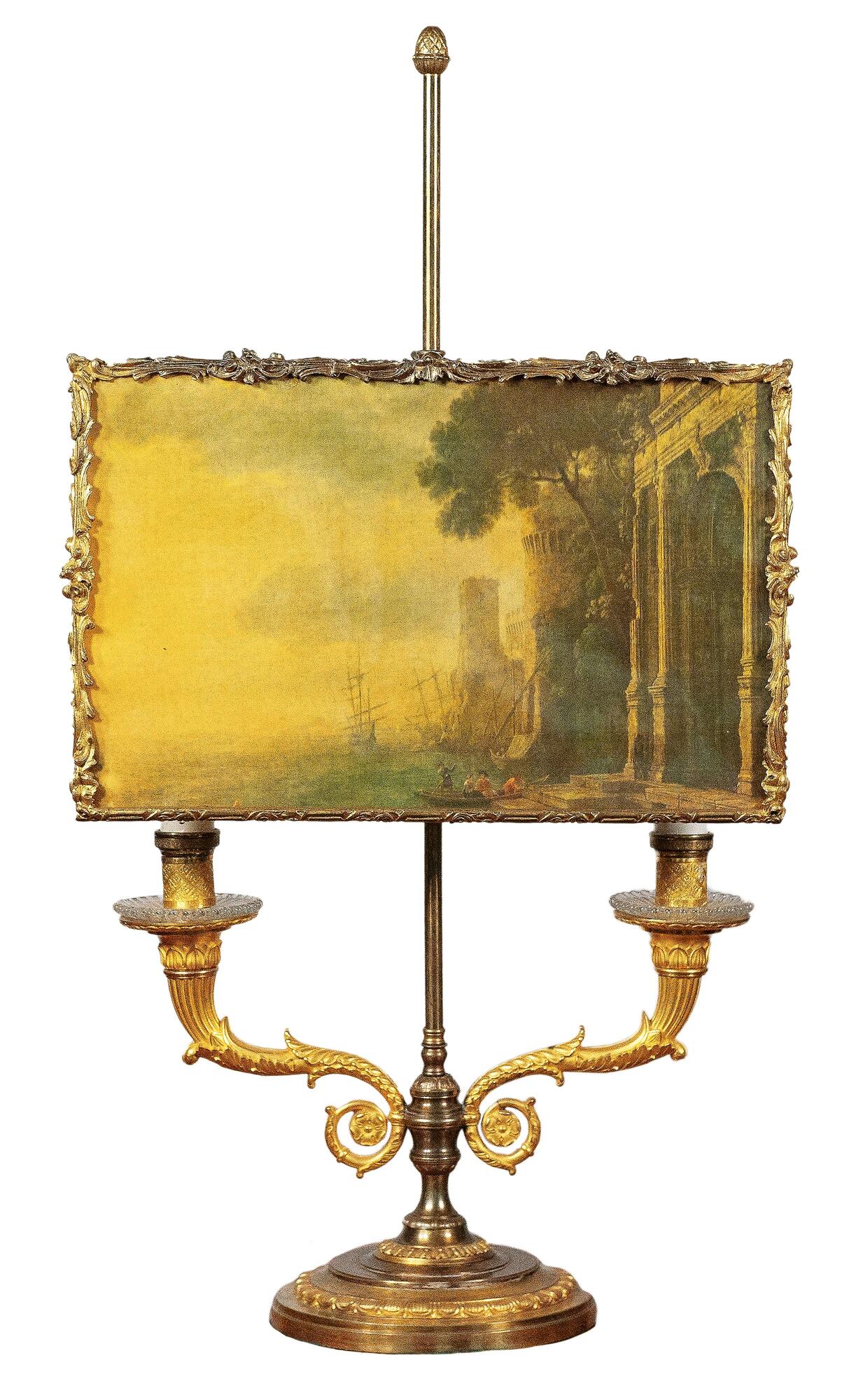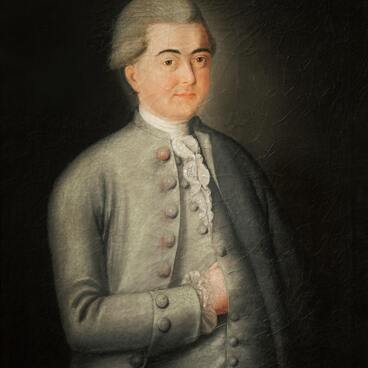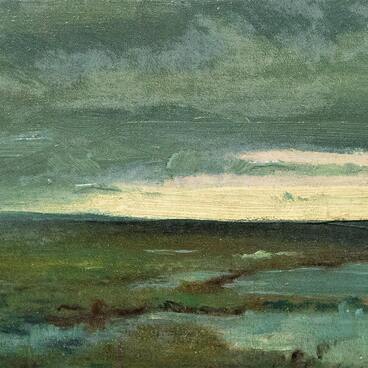The first candles appeared over three thousand years ago in Ancient Egypt. Soon, candlesticks were invented, which were used to support candles and collect melted wax. The original candlestick consisted of a pyramidic base and a shaft with spikes, rings, and a cup. For many centuries, the main structure has been preserved, with only a few details changed. The cup was replaced by a flower-like bobèche — a plate for collecting melted wax.
At different times, candlesticks were made from various materials — copper, brass, cast iron, bronze, porcelain, or glass.
The collection “Portrait in Vintage Interior” houses an unusual object — a candlestick with a shade. Such candlesticks were called “miracle”. It was a prototype of a modern table lamp. Miracle candlesticks appeared in the early 19th century. They were mass-produced by St. Petersburg bronzers. In those years, large candlesticks were called flambeau.
The design of a lamp is minimalistic: a base has a shaft attached to it with candles and a shade to protect eyes from bright light.
A translucent shade usually had a landscape, a city view, a flower arrangement, or a romantic scene depicted on it. The flickering fire of a candle created the effect of movement in the picture, enlivening it. Therefore, such a lighting device was called “miracle”, the word derived from French.
Miracle candlesticks had one, two or three candles and were made of gilded bronze: foliate, floral or geometric decor characteristic of that period was applied using the technique of embossing or knurling. A shade with watercolor drawings was covered with mica, translucent glass, or a thin plate made of porcelain or biscuit china for fire protection. This protective layer was called lithophane.
The shade could be moved up and down the shaft. It also served to scatter light. Miracle candlesticks were used in living rooms until the late 19th century.
A miracle candlestick from the museum’s collection was kept in a private collection in St. Petersburg and was transferred to the Arkhangelsk Museum in 1995. An ornately-shaped leg with two brackets in the form of curved embossed sprouts is attached to a round stepped base with a corbel. The brackets have plate-shaped bobèches to hold candles. From the center of the leg, a smooth long shaft rises, topped with a decorative knob. The shade can move along the shaft.
At different times, candlesticks were made from various materials — copper, brass, cast iron, bronze, porcelain, or glass.
The collection “Portrait in Vintage Interior” houses an unusual object — a candlestick with a shade. Such candlesticks were called “miracle”. It was a prototype of a modern table lamp. Miracle candlesticks appeared in the early 19th century. They were mass-produced by St. Petersburg bronzers. In those years, large candlesticks were called flambeau.
The design of a lamp is minimalistic: a base has a shaft attached to it with candles and a shade to protect eyes from bright light.
A translucent shade usually had a landscape, a city view, a flower arrangement, or a romantic scene depicted on it. The flickering fire of a candle created the effect of movement in the picture, enlivening it. Therefore, such a lighting device was called “miracle”, the word derived from French.
Miracle candlesticks had one, two or three candles and were made of gilded bronze: foliate, floral or geometric decor characteristic of that period was applied using the technique of embossing or knurling. A shade with watercolor drawings was covered with mica, translucent glass, or a thin plate made of porcelain or biscuit china for fire protection. This protective layer was called lithophane.
The shade could be moved up and down the shaft. It also served to scatter light. Miracle candlesticks were used in living rooms until the late 19th century.
A miracle candlestick from the museum’s collection was kept in a private collection in St. Petersburg and was transferred to the Arkhangelsk Museum in 1995. An ornately-shaped leg with two brackets in the form of curved embossed sprouts is attached to a round stepped base with a corbel. The brackets have plate-shaped bobèches to hold candles. From the center of the leg, a smooth long shaft rises, topped with a decorative knob. The shade can move along the shaft.



